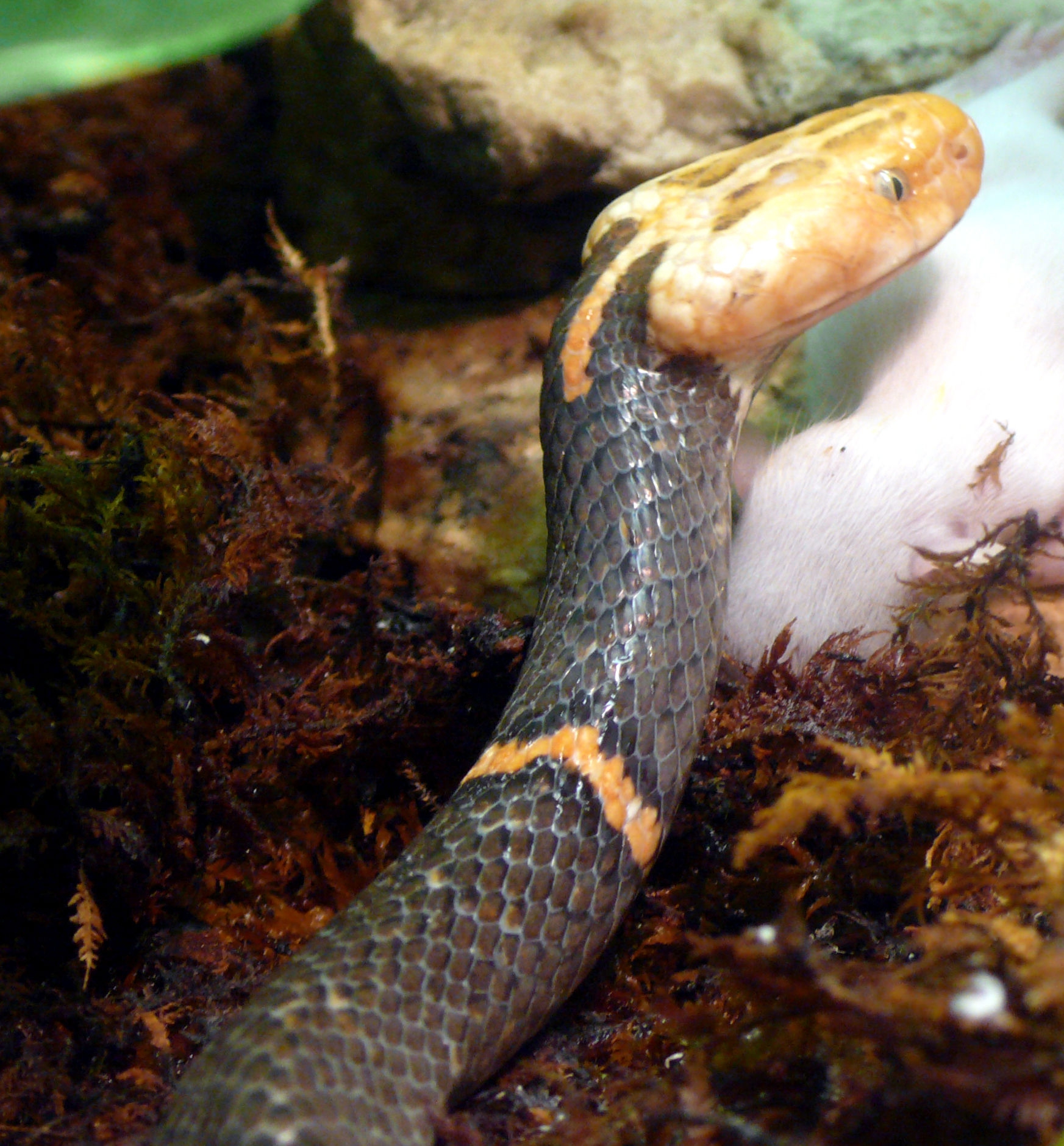| Citation |
|
Description |
Geographic Range [top]
Range Description: This snake is found in southern and central China, from western Yunnan and southern Shaanxi east to Zhejiang, south to Guangxi. It ranges into northern Myanmar and northern Viet Nam (Zhao 1993). It has been found at elevations of 100 to 2,200 m asl.
Countries occurrence:
Native:
China (Anhui, Fujian, Gansu, Guangxi, Guizhou, Hunan, Jiangxi, Shaanxi, Sichuan, Tibet [or Xizang], Yunnan, Zhejiang); Myanmar (Myanmar (mainland)); Viet Nam
Lower elevation limit (metres): 100
Upper elevation limit (metres): 2200
Range Map: Click here to open the map viewer and explore range.
Population [top]
Population: It is a uncommon species, but may be under-recorded due to its secretive habits and limited field surveys for this snake (D-q. Rao pers. comm. March 2012). It is described as being very rare in Vietnam (Q.T. Nguyen pers. comm. March 2012). Although some population decline is possible as a result of exploitation for the international pet trade, due to this snakes rarity and low overall levels of exploitation, this is not thought likely to approach 30% over a ten-year period (M. Lau pers. comm. March 2012).
Current Population Trend: Unknown
Additional data:
?Population severely fragmented: No
Habitat and Ecology [top]
Habitat and Ecology: This viper lives in mountainous areas, above altitudes of 2,000 feet (610 m). It is found in open areas, rocky areas, sometimes in villages, and also in forest or shrubland. The largest specimens are just under thirty inches in length. The diet in the wild is unknown, one captive specimen fed upon small pre-killed laboratory mice. They are reported to be oviparous, and lay about six eggs.
Systems: Terrestrial
Use and Trade [top]
Use and Trade: This species is in high demand in certain sections of the international pet trade (Weissgold and Leuteritz 2011), where specimens fetch high prices in Western markets. This may be the result of its scarcity, as it is only occasionally encountered in the wild and is consequently found only occasionally in markets in China (D-q. Rao pers. comm. March 2012). It is also difficult to breed in captivity, and captive animals rarely survive long (D-q. Rao and M. Lau pers. comm. March 2012). It is not known to be included in trade in Vietnam (Q.T. Nguyen pers. comm. March 2012). There are no records of imports of this species to the United States since 2009, but the accuracy of these data is uncertain as the species is not included on CITES (B. Weissgold pers. comm. March 2012).
Threats [top]
Major Threat(s): There appear to be no significant threats to this species, which survives in degraded habitats and has a large range. As a cryptic and apparently rare snake, however, there is little information on threats generally (M. Lau pers. comm. March 2012). There is some exploitation of the species for the pet trade, where it is in high demand among hobbyists with an interest in rare and attractive vipers. This is however a minority interest among reptile keepers, and consequently the overall level demand for this snake is "rather small" (M. Lau pers. comm. March 2012). While the pet trade is only considered to be a minor threat at present due to the limited level of exploitation, this situation requires monitoring (D-q. Rao pers. comm. March 2012).
Conservation Actions [top]
Conservation Actions: No conservation actions are currently known for this species. It is present in some protected areas. More information is needed on this species distribution, population status, natural history and threats. There is a need to review the trade in this species, including monitoring of both local markets in China and of internet-based international trade (D-q. Rao pers. comm. March 2012) and possibly introduce regulations on exports. The species is not presently listed on CITES.
Citation: Lau, M. & Rao, D.-q. 2012. Azemiops feae. The IUCN Red List of Threatened Species 2012: e.T190641A1955758. http://dx.doi.org/10.2305/IUCN.UK.2012-1.RLTS.T190641A1955758.en. Downloaded on 26 January 2016.
Disclaimer: To make use of this information, please check the .
Feedback: If you see any errors or have any questions or suggestions on what is shown on this page, please provide us with feedback so that we can correct or extend the information provided |

